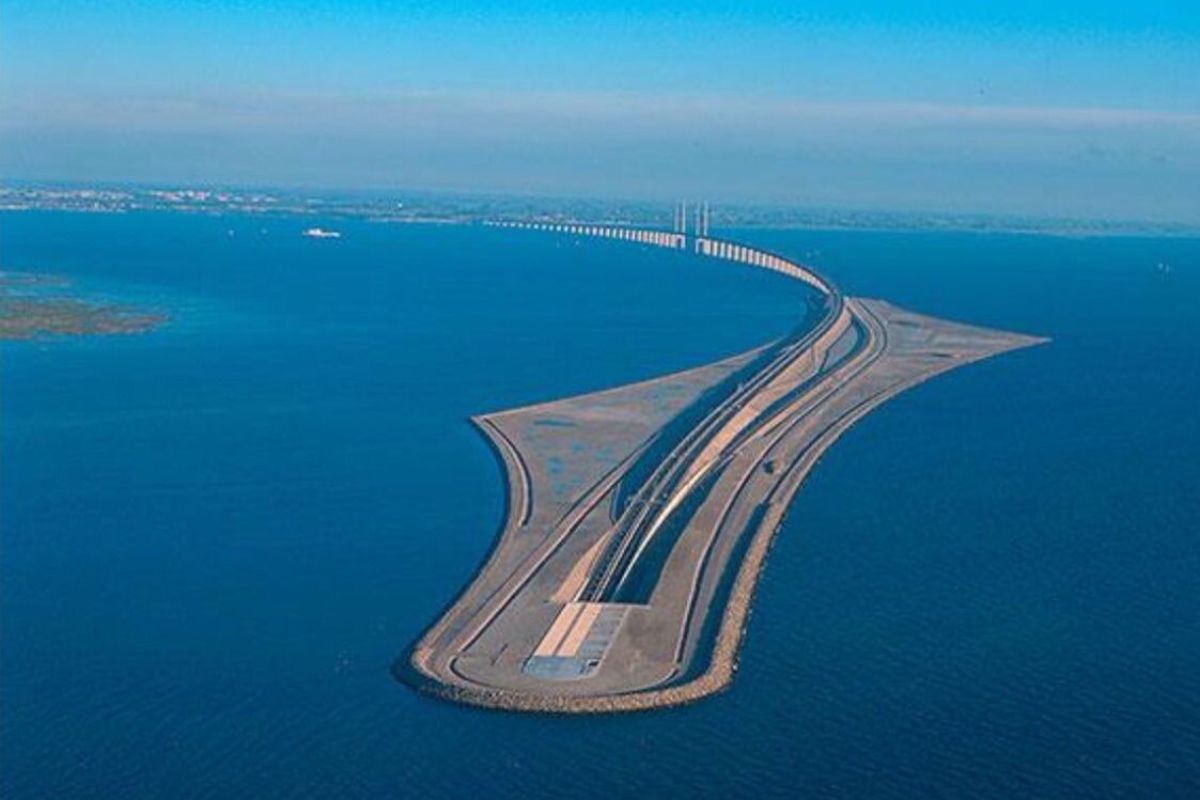The Øresund Bridge is not just a bridge. A double-decker road and rail structure, an artificial island, and a tunnel The gigantic structure starts as a tunnel on the Danish side, transitions into an artificial island, and begins to transform into a seemingly forever bridge reaching Sweden, generating a marvel of engineering. Enter the Øresund bridge, an opportunity for engineers to expand the bounds of their discipline. This is its story.
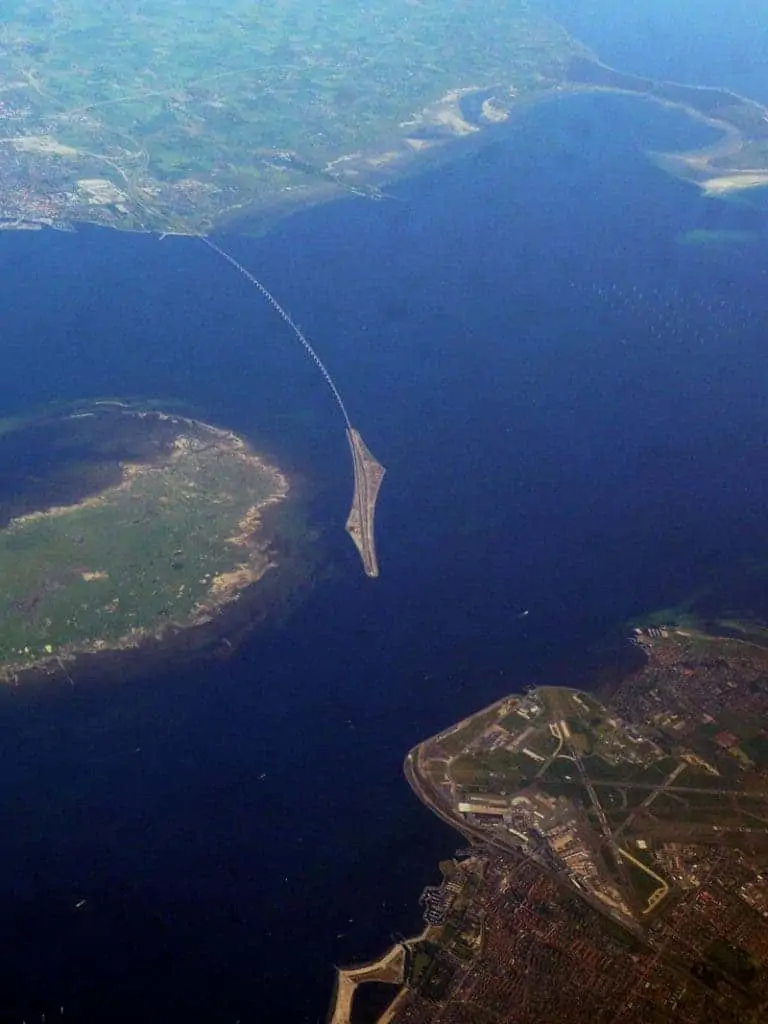
The Bridge Between Denmark and Sweden
The Øresund Strait separates the island of Zealand in Denmark from the southern province of Scania in Sweden. At its narrowest point between Kronborg Castle in Helsingør, Denmark, and Sweden, the strait measures 4 kilometers (2.5 miles) — a challenging distance to traverse. However, this didn’t deter these Scandinavian nations from creating an extraordinary solution. They conceived a magnificent bridge that transforms into a tunnel. Let me explain.
The concept for a bridge over the Øresund Strait originated in the early 20th century. In 1910, the Swedish Parliament began discussing the idea of constructing a bridge. Initially considered too ambitious, the project was formally proposed in 1936 by a consortium of Danish engineering companies. Their vision included a national motorway incorporating the bridge, but this plan was eventually abandoned.
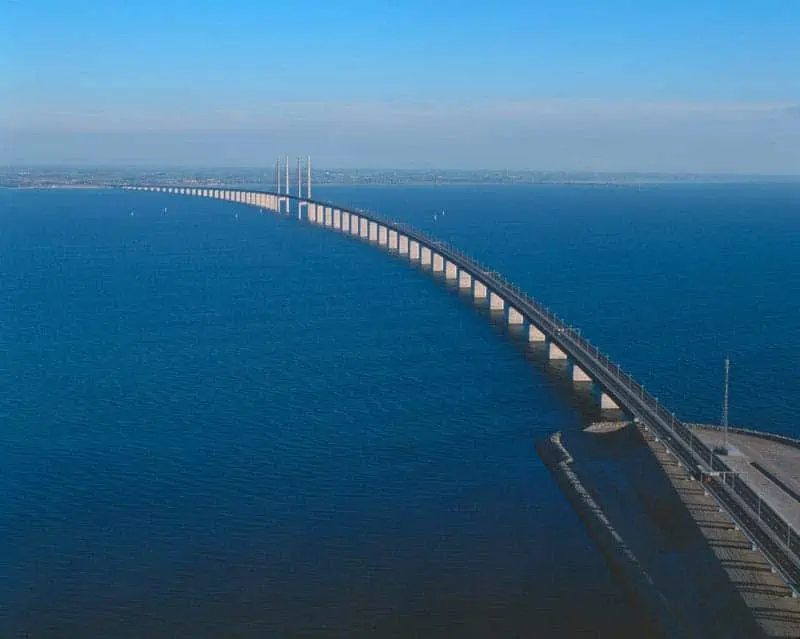
For several decades, proposals for a bridge between Denmark and Sweden were repeatedly introduced and then shelved. The main challenge lay in developing an engineering project that could succeed in the difficult conditions of the strait. Additionally, economic feasibility and minimal disruption to the delicate local environment were significant concerns.
Environmental issues were so crucial that they significantly influenced the bridge’s construction. Ultimately, the project was only viable with a strong emphasis on environmental considerations.
The resulting design was remarkable. The solution? Not just a bridge, but a tunnel too — along with an island.
Øresund Bridge Gets Built
Designed by the Danish engineering firm COWI and spearheaded by architect George K.S. Rotne, the Øresund Bridge project commenced in 1995 and reached completion in 1999.
Two significant setbacks arose during construction. The first was the discovery of 16 unexploded World War II bombs on the seafloor, which required careful removal and disarming. The second involved a misaligned tunnel segment that needed correction. Despite these challenges, the bridge-tunnel-island project was finished three months ahead of schedule.
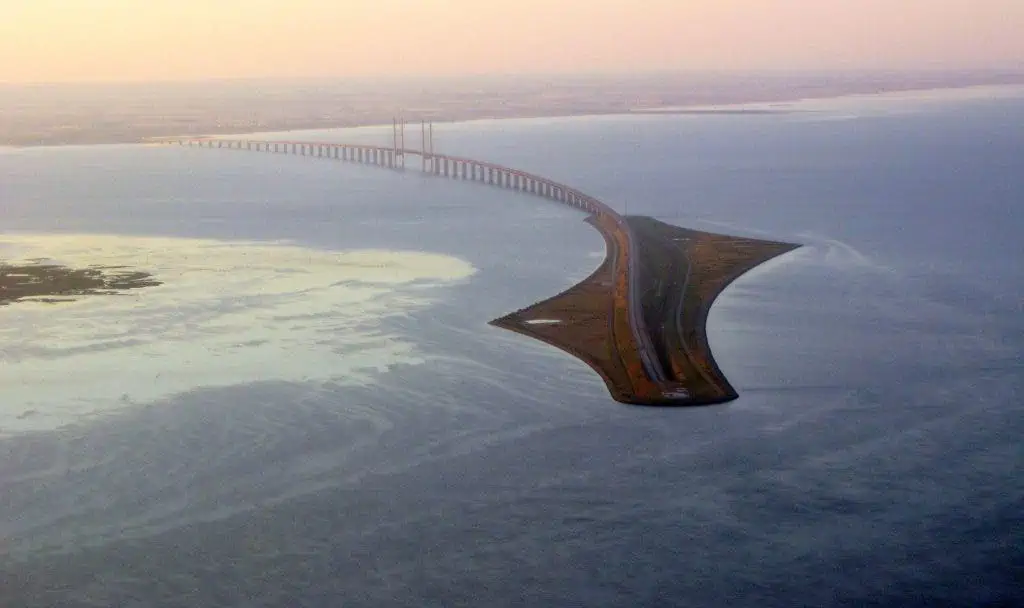
The bridge began operations in 2000 and is currently managed jointly by both Denmark and Sweden.
Spanning nearly 8 kilometers (5 miles) from the Swedish coast to the artificial island of Peberholm in the strait, the crossing is completed by a 4 km (2.5-mile) underwater tunnel, named the Drogden Tunnel, leading to the Danish island of Amager.
Navigating the Bridge-Tunnel
Approaching from the Danish side, your journey begins with the 4-kilometer Drogden Tunnel. This underwater passage was constructed to avoid disrupting flights from nearby Copenhagen Airport and to protect marine wildlife. Prefabricated sections were submerged and carefully laid on the seafloor, akin to a colossal game of underwater Tetris.
Next, you arrive at Peberholm, an artificial island named after its natural neighbor, Saltholm. Peberholm serves as a peaceful resting spot for migrating birds and marks the transition from tunnel to bridge.
Finally, you traverse the remarkable 8-kilometer bridge itself, a cable-stayed structure that spans the strait and leads into Sweden. The two towering pylons not only create a striking visual but also support the bridge via numerous steel cables, providing a balance of strength and lightness.
Constructing the Øresund Bridge was about more than just connecting two points. It facilitated the smooth movement of traffic between two nations, accommodating both cars and trains.
The bridge features two decks: the upper deck for vehicles, with four lanes allowing speeds up to 90 km/hr, and the lower deck for trains, enabling them to travel at speeds up to 200 km/hr. This design allows passengers to journey from Copenhagen to Malmö in mere minutes.
Building for Nature
The construction of the Øresund Bridge was a testament to working in harmony with nature. Denmark and Sweden agreed to include a tunnel and an artificial island to safeguard the marine life in the Øresund Strait.
Peberholm, the man-made island, is an impressive creation. Built from materials dredged from the seabed, it was designed with significant attention to flora and fauna, allowing natural development without interference.

Peberholm has become a major point of interest for biologists. Only scientists are permitted to study its natural areas. The Lund’s Botanical Association has documented over 500 plant species, along with numerous birds and the rare green toad.
Initially, biologists planted a few grasses to stabilize the island, but nature quickly took over. It now hosts more than 500 plant species and serves as a nesting site for many birds.
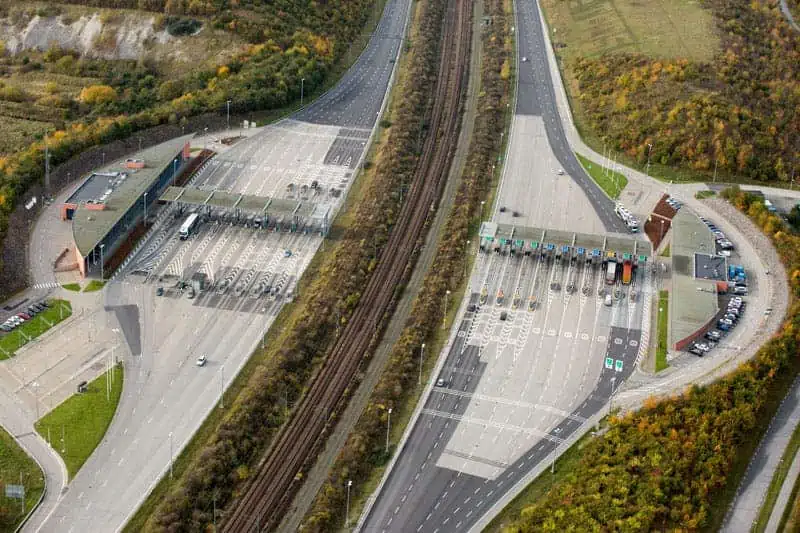
Since 2008, the island has seen a steady increase in bird populations and species diversity. It is largely inhabited by various breeding gulls and has also become a refuge for some locally threatened species.
A Bridge for The Ages
The Øresund Bridge is the longest combined road and rail bridge in Europe, linking Copenhagen, Denmark’s capital, with Malmö in Sweden. This connection integrates the transport networks of the Scandinavian Peninsula with those of Central and Western Europe.
The cable-stayed bridge features two 204-meter-high pylons (almost 700 feet), supporting the structure across the channel. This engineering marvel has facilitated the economic development and growth of an area now home to 3.7 million people.
The Øresund Bridge has become more than a mere crossing; it symbolizes unity and collaboration. It has revolutionized travel, business, and cultural exchange, making the Øresund region one of the most dynamic areas in Scandinavia.
For engineers worldwide, the bridge stands as an inspiring example of human ingenuity combined with technical skill and environmental consideration. The connection between Denmark and Sweden is indeed a wonder of modern engineering.

